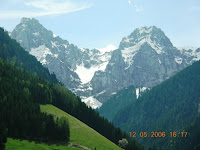
I was traveling and missed the photography extravaganza, All India Salon of Photography – 2008. The event was held at the
What is a photograph? It is a moment in time, an event in life, captured forever. When this is done with imagination, the resulting image rises above a mundane record to a work of art. Padma Shri Raghu Rai, the doyen of Indian photographers who was the Chief Guest at the valedictory function of the Salon said that the preserved photographic treasures enrich viewers on how photography has grown as an art form.
The PSM was started in 1857 by Dr. Alexander Hunter and the Honorable Walter Elliot. It survived the vicissitudes of time and is a premier organization that promotes photography in the country. During its one and a half centuries of existence the PSM developed affiliations with photographic communities all over the world. These include the Royal Photographic Society,

Says KO Isaac, President of the PSM, “As part of our commemorative programs celebrating 150 years of our Society's contributions to photography and fellowship, we have once again brought together hundreds of photographers together from across the length and breadth of our country, showcasing exemplary talent, unique perspectives and proving that an art such as photography unites people irrespective of caste, creed or religion; everyone coming together in celebration of their passion of photography.”
The PSM holds over thirty programs every year. These include discussions, guest lectures, expositions, travel, workshops, family fellowships and training sessions. There are special schemes for students. For details about the PSM, please visit http://www.photomadras.org/index.html
Incidentally, KO Isaac, the President of PSM, is an excellent photographer. Many of his creations have appeared on this blog. Some of them are reproduced here. Click on them for enlarged view. The copyright is reserved.










Also see:




























